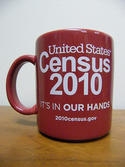Pity Generation X, the Americans born between 1965 and 1981, who have been derided for years as “apathetic,” “cynical,” and “disengaged.” Meanwhile, the greatness of the Greatest Generation is clear in its very name. Much laudatory ink has been spilled on the Baby Boomers...usually by Boomers themselves. As for the Millennials, those born between 1982 and 1998, the quantity of reportage lauding their public-spiritedness has quickly become tiresome. But a new report casts doubt on the widely accepted stereotype of Gen X-ers as inferior to these other groups. read more »
Demographics
Millennials Need to Stand Up and Be Counted
As the campaign to ensure a complete and accurate count of every American in this year’s census gets off the ground, a new survey of American attitudes toward participating in the census shows that young Americans, members of the Millennial Generation, born 1982-2003, may prove least likely to stand up and be counted. The Pew Research Center for the People and the Press found that roughly one-third of 18-29 year olds hadn’t heard of the census, and even after having the process described to them, 17 percent were still unaware of just what the census involved. read more »
The Death Of Gentry Liberalism
Gentry liberalism, so hot just a year ago, is now in full retreat, a victim of its hypocrisy and fundamental contradictions. Its collapse threatens the coherence of President Barack Obama's message as he prepares for his State of the Union speech on Wednesday. read more »
Housing Unaffordability as Public Policy: The New Demographia International Housing Affordability Survey
The just released 6th Annual Demographia International Housing Affordability Survey shows some improvement in housing affordability, especially in the United States and Ireland but a continuing loss of housing affordability, especially in Australia. read more »
The Kids Will Be Alright
America's population growth makes it a notable outlier among the advanced industrialized countries. The country boasts a fertility rate 50% higher than that of Russia, Germany or Japan and well above that of China, Italy, Singapore, North Korea and virtually all of eastern Europe. Add to that the even greater impact of continued large-scale immigration to America from around the world. By the year 2050, the U.S. population will swell by roughly 100 million, and the country's demographic vitality will drive its economic resilience in the coming decades. read more »
The War Against Suburbia
A year into the Obama administration, America’s dominant geography, suburbia, is now in open revolt against an urban-centric regime that many perceive threatens their way of life, values, and economic future. Scott Brown’s huge upset victory by 5 percent in Massachusetts, which supported Obama by 26 percentage points in 2008, largely was propelled by a wave of support from middle-income suburbs all around Boston. The contrast with 2008 could not be plainer. read more »
China’s Heartland Capital: Chengdu, Sichuan
On May 12, 2008, Chinese architect Stepp Lin was focusing intensely on his professional licensing exam in a testing center in central Chengdu when suddenly he felt someone bumping his desk. By the time he looked up to see what it was, most of the other exam takers were frantically fleeing for the exit. It turns out that what he was feeling were the tremors of what was to be the most devastating earthquake to hit China in recent memory. read more »
Urbanity Drives Gay Rights Victory in Washington
If anyone were to doubt that there really are two Washingtons, that the Seattle metropolitan core (and its playgrounds) are another world from most rural to small city Washington (especially east of the Cascade crest), a look at the maps for the vote on Referendum 71 last November should be persuasive. These are not subtle, marginal differences, but indisputable polarization in what political and cultural researchers may call the modernist-traditional divide. read more »
Obama's Elite Power Base
Looking back at President Obama’s first year in office, this much is clear: Obama first enraged the right wing by seeming to veer far left, then turned off the left by seeming to abandon them. Even as Fox News fundamentalists rail against “socialism,” self-styled progressives like Naomi Klein scream about a “blown” opportunity to lead the nation from the swamp of darkest capitalism.
Both right- and left-wing critics fail to consider the fundamental nature of the Obama regime. This presidency represents not a traditional ideology but a new politics that mirrors the rise of a new, and potentially hegemonic class, one for which Obama is a near-perfect representative. read more »
New Geography Top Stories of 2009
As we bring to a close our first full calendar year at NewGeography.com, we thought readers may be interested in which articles out of more than 350 published enjoyed the widest readership. It’s been a solid year of growth for the site; visits to the site over the past six months have more than tripled over last year and subscribers have increased by a factor of six. The list of popular articles is based both on.readership online and via RSS. read more »
- Login to post comments





















